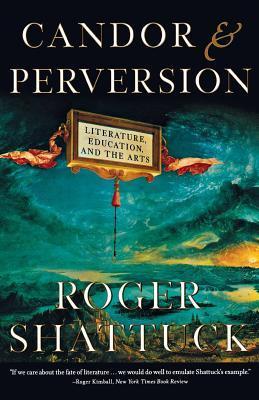What do you think?
Rate this book


432 pages, Paperback
First published January 1, 1999
Candor and Perversion would be a stronger book if all its thirty-nine chapters were as strict as that on "nineteen theses", or as entertainingly slanderous as that on Foucault. Unfortunately, most of the book is made up of reprinted reviews, some of them fifteen years old. Shattuck's range is impressive, covering Sarraute, Coleridge, Kipling, Proust, Flaubert, Picasso, Cocteau, O'Keeffe, Man Ray, Paz, Naipaul and Renata Adler. But these pieves have done thier job of work and should have been left undisturbed to yellow in the archives.